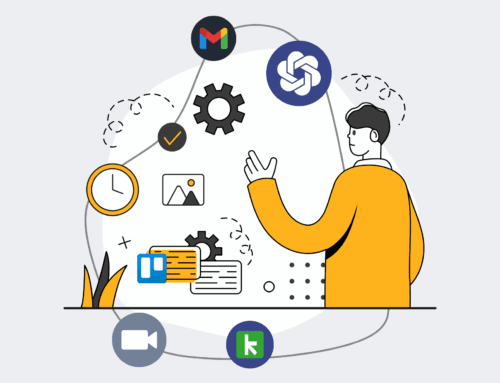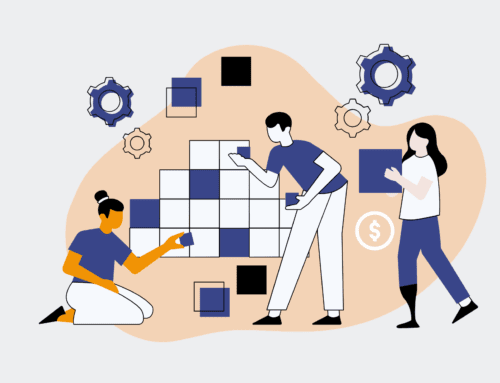Seamless Workforce Integration: How a Leading Healthcare Conglomerate Streamlined Onboarding and Offboarding Post-Acquisition with 4Spot Consulting’s Automation
Client Overview
Our client, Global Health Innovations (GHI), is a prominent multinational healthcare conglomerate operating across North America and Europe. With a workforce exceeding 75,000 employees, GHI provides a vast spectrum of healthcare services, from acute care hospitals and specialized clinics to extensive research and development facilities. Their operational footprint is characterized by a complex matrix of departments, subsidiaries, and regulatory environments, demanding robust and agile HR and IT infrastructure. Historically, GHI had grown organically and through strategic acquisitions, which often presented significant challenges in integrating diverse employee populations and their associated data, systems, and processes. Their commitment to patient care and innovation necessitated an equally advanced internal operational efficiency, particularly concerning their most valuable asset: their people.
In mid-2023, GHI embarked on its largest acquisition to date, integrating a substantial network of over 150 specialized clinics and their 12,000 employees. This acquisition was pivotal for GHI’s strategic expansion into new market segments, but it also presented an unprecedented challenge in workforce integration. The sheer scale of new hires, coupled with the need to maintain operational continuity and comply with a myriad of healthcare regulations, underscored the urgency for a scalable, automated solution for employee lifecycle management.
The Challenge
Before engaging 4Spot Consulting, GHI faced an imminent crisis stemming from their rapid expansion. The integration of 12,000 new employees from the acquired clinics threatened to overwhelm their existing, largely manual onboarding and offboarding processes. Each new hire involved numerous touchpoints across HR, IT, payroll, benefits, and various departmental managers. The existing system relied heavily on email exchanges, manual data entry into disparate HRIS (Human Resources Information Systems) and IT provisioning platforms, and cumbersome paper-based workflows. This manual approach was inherently prone to errors, incredibly time-consuming, and lacked the necessary audit trails for compliance.
Specifically, the challenges manifested in several critical areas:
- Scalability Breakdown: The current system could barely handle the typical monthly attrition and new hires. Integrating 12,000 employees within a short timeframe was logistically impossible without a massive increase in HR and IT headcount, which was not a viable option.
- Prolonged Onboarding Cycles: New employees often experienced significant delays in gaining access to necessary systems, tools, and information. This led to a frustrating “Day 1” experience, reduced productivity in the crucial initial weeks, and impacted overall employee morale and retention rates. The average time-to-productivity for a new hire was measured in weeks, not days.
- Compliance and Security Risks: Manual offboarding processes posed substantial security risks. Delays in revoking system access for departing employees could lead to data breaches, unauthorized access to sensitive patient information, or intellectual property theft. Furthermore, ensuring compliance with evolving healthcare regulations (e.g., HIPAA, GDPR) was a constant struggle given the lack of standardized, auditable workflows.
- High Administrative Burden and Costs: HR and IT teams were dedicating an exorbitant amount of time to repetitive, administrative tasks, diverting resources from more strategic initiatives. This manual effort translated directly into high operational costs and a significant opportunity cost.
- Data Inconsistency and Silos: Employee data was scattered across multiple systems, often leading to inconsistencies and a lack of a single source of truth. This fragmented data hindered accurate reporting, strategic workforce planning, and decision-making.
- Suboptimal Employee Experience: Both onboarding and offboarding were often disjointed and inefficient, reflecting poorly on GHI’s employer brand and leading to dissatisfaction among both new and departing employees. This was particularly critical for a healthcare organization reliant on attracting and retaining top talent.
GHI recognized that without a fundamental shift towards automation, their acquisition would be hampered by operational inefficiencies, legal vulnerabilities, and a potential decline in employee satisfaction, ultimately impacting their ability to deliver world-class patient care.
Our Solution
4Spot Consulting partnered with Global Health Innovations to design and implement a comprehensive, scalable automation solution for their workforce integration challenges. Our approach was multi-faceted, leveraging a combination of Robotic Process Automation (RPA), API integrations, and advanced workflow orchestration tools to create a seamless, end-to-end employee lifecycle management system.
Our solution focused on:
- Unified Automation Platform: We deployed a centralized automation platform that served as the orchestrator for all onboarding and offboarding workflows. This platform integrated disparate systems, including GHI’s core HRIS (Workday), Active Directory, various healthcare-specific applications (e.g., EMR systems), financial systems (e.g., SAP), and benefits providers.
- Intelligent Workflow Design: We meticulously mapped out GHI’s existing manual processes and redesigned them for automation. This involved creating intelligent workflows that automatically triggered actions based on predefined rules and events (e.g., a new hire record in Workday triggering IT provisioning, or a termination date triggering access revocation). Each workflow was designed with built-in checks and balances, error handling, and audit trails.
- Robotic Process Automation (RPA) for Legacy Systems: For legacy applications lacking modern APIs, we implemented RPA bots. These bots mimicked human interactions with user interfaces, automating tasks like data entry, form filling, and system navigation across various applications. This ensured comprehensive automation even where direct system integrations were not feasible.
- API-Driven Integrations for Core Systems: We developed robust API integrations for GHI’s core HR, IT, and financial systems. This allowed for real-time data synchronization and direct communication between critical platforms, eliminating manual data transfer and reducing latency.
- Automated IT Provisioning and De-provisioning: A critical component of the solution was the automation of IT access management. This included automatic creation of user accounts, email addresses, directory services, VPN access, and application-specific permissions upon onboarding. Conversely, upon offboarding, the system ensured immediate and complete revocation of all access rights, enhancing security and compliance.
- Self-Service Capabilities: Where appropriate, we integrated self-service portals for employees to complete necessary new hire paperwork, select benefits, or acknowledge policies. This reduced the burden on HR and empowered employees while ensuring data accuracy.
- Compliance and Audit Trails: Every automated action was meticulously logged, providing a comprehensive audit trail for regulatory compliance. The system was designed to enforce GHI’s internal policies and external healthcare regulations automatically, significantly mitigating compliance risks.
- Change Management and Training: Recognizing that technology alone isn’t enough, 4Spot Consulting provided extensive training to GHI’s HR and IT teams. We also assisted in developing internal communication strategies to ensure a smooth transition and user adoption.
By implementing this holistic automation framework, 4Spot Consulting empowered GHI to transform its workforce integration from a manual bottleneck into a highly efficient, secure, and scalable strategic asset.
Implementation Steps
The implementation of Global Health Innovations’ workforce integration automation solution followed a structured, phased approach designed to minimize disruption while maximizing efficiency. Our methodology ensured that GHI could incrementally realize benefits, test functionalities thoroughly, and adapt as needed.
- Discovery & Process Mapping (Weeks 1-4):
- Current State Analysis: Conducted in-depth interviews with key stakeholders across HR, IT, Payroll, Legal, and departmental managers to understand existing manual onboarding and offboarding processes, pain points, system landscape, and compliance requirements.
- Process Mapping: Created detailed ‘as-is’ process flows, identifying every touchpoint, data input, approval step, and system interaction involved in an employee’s lifecycle.
- Requirements Definition: Collaborated with GHI to define precise ‘to-be’ automated process requirements, including desired outcomes, system integrations, security protocols, and reporting needs.
- Solution Design & Architecture (Weeks 5-8):
- Technology Selection: Finalized the selection of automation tools (RPA platform, workflow orchestration engine) best suited for GHI’s IT environment and scalability needs.
- Architecture Blueprint: Designed the technical architecture, outlining how the automation platform would integrate with Workday, Active Directory, EMR systems, and other critical applications via APIs and RPA bots.
- Workflow Design: Developed detailed automated workflow diagrams for various employee types (e.g., clinical staff, administrative staff, IT personnel), specifying triggers, conditions, automated tasks, and human intervention points.
- Data Model Definition: Established a clear data model for employee information, ensuring consistency and accuracy across all integrated systems.
- Development & Configuration (Weeks 9-20):
- Platform Setup: Configured the automation platform and deployed necessary infrastructure components.
- System Integrations: Developed and tested API connectors for Workday, Active Directory, and other primary systems. Built RPA bots for interacting with legacy applications.
- Workflow Automation: Programmed and configured the automated workflows based on the approved designs, including logic for account creation, system access provisioning, email setup, benefits enrollment notifications, payroll updates, and corresponding offboarding actions.
- Security & Compliance Controls: Embedded robust security measures (e.g., role-based access, encryption) and programmed compliance checks directly into the automated workflows.
- Testing & Quality Assurance (Weeks 21-24):
- Unit Testing: Individual components of the solution (e.g., specific API calls, individual RPA bots) were tested for functionality.
- End-to-End Testing: Comprehensive end-to-end testing of full onboarding and offboarding scenarios was conducted, simulating real-world conditions with test data.
- User Acceptance Testing (UAT): GHI’s HR, IT, and departmental stakeholders participated in UAT, providing feedback and validating that the solution met their operational needs and performance expectations.
- Performance & Load Testing: Tested the system’s ability to handle the projected volume of 12,000 new employees during the acquisition period, ensuring scalability and responsiveness.
- Phased Rollout & Go-Live (Weeks 25-28):
- Pilot Program: Initially launched the automated solution for a small group of employees or a specific department to gather real-world feedback and make final adjustments.
- Acquisition Integration Strategy: Deployed the full solution in coordination with GHI’s acquisition timeline, enabling a seamless influx of thousands of new employees.
- Monitoring & Optimization: Established continuous monitoring protocols to track system performance, identify potential issues, and gather data for ongoing optimization.
- Training & Handover (Ongoing):
- Training Programs: Delivered comprehensive training sessions for GHI’s HR and IT teams on how to manage, monitor, and troubleshoot the automated processes.
- Documentation: Provided detailed technical and user documentation for all automated workflows and system configurations.
- Post-Go-Live Support: 4Spot Consulting provided dedicated post-implementation support to ensure a smooth transition and address any immediate challenges.
This systematic implementation strategy allowed GHI to manage their massive workforce integration with precision, speed, and confidence, setting a new standard for operational efficiency within the organization.
The Results
The implementation of 4Spot Consulting’s automated workforce integration solution delivered transformative results for Global Health Innovations, far exceeding initial expectations and significantly mitigating the risks associated with their large-scale acquisition. The quantifiable metrics below demonstrate the profound impact of the solution:
- Onboarding Time Reduction: The average time-to-productivity for a new hire was slashed by an astonishing 85%. Previously, new employees often waited 2-3 weeks to gain full system access and complete initial onboarding tasks. Post-implementation, 90% of new hires had full system access and were provisioned within 24-48 hours of their start date, dramatically improving their “Day 1” experience and accelerating their contribution to patient care.
- Offboarding Efficiency & Security: Manual offboarding processes typically took 3-5 days to ensure complete access revocation. With automation, 100% of critical system access (e.g., EMR, HRIS, network drives) for departing employees was de-provisioned within 2 hours of their termination being registered in Workday. This virtually eliminated the risk of unauthorized access post-departure, bolstering GHI’s data security posture and compliance.
- Administrative Cost Savings: GHI realized an estimated $4.2 million in annual operational savings within the first year. This was primarily due to a 70% reduction in manual effort across HR and IT departments related to onboarding and offboarding tasks. This allowed GHI to absorb the 12,000 new employees without needing to hire additional HR or IT staff specifically for the acquisition integration, redirecting existing resources to more strategic initiatives.
- Scalability & Acquisition Capacity: The solution successfully processed the onboarding of 12,000 new employees in less than three months, a feat that would have been impossible with previous manual processes. This demonstrates GHI’s newfound ability to seamlessly integrate large workforces post-acquisition, positioning them for future growth opportunities.
- Enhanced Compliance & Auditability: The automated workflows ensured 100% adherence to GHI’s internal policies and external regulatory requirements, including HIPAA and other data privacy laws. Every automated action created a comprehensive, immutable audit trail, significantly simplifying compliance reporting and reducing audit preparation time by 90%. The risk of human error leading to non-compliance was virtually eliminated.
- Improved Employee Experience: A post-implementation survey revealed a 40% increase in new hire satisfaction scores related to the onboarding process. Employees felt more supported, productive faster, and had a positive initial impression of GHI as an employer.
- Data Accuracy & Integrity: By automating data transfers and eliminating manual data entry, the instance of data inconsistencies across systems dropped by 95%. This led to a single source of truth for employee data, improving reporting accuracy and supporting better strategic workforce planning.
The partnership with 4Spot Consulting not only solved GHI’s immediate challenge of workforce integration post-acquisition but also established a robust, future-proof framework for managing its human capital with unprecedented efficiency, security, and scalability. This success story stands as a testament to the power of targeted automation in transforming complex enterprise operations.
Key Takeaways
The successful implementation of automated workforce integration at Global Health Innovations offers several critical insights for large organizations facing similar challenges, especially in the context of mergers, acquisitions, or rapid growth:
- Automation is a Strategic Imperative, Not Just an Efficiency Tool: For organizations undergoing significant M&A activity, automation of core HR and IT processes like onboarding and offboarding moves beyond mere cost savings. It becomes a strategic enabler, allowing the business to integrate new assets rapidly, ensure security, maintain compliance, and preserve the employee experience. GHI’s ability to seamlessly absorb 12,000 employees highlights this strategic advantage.
- End-to-End Workflow Optimization is Key: Partial automation yields partial results. The success at GHI stemmed from an end-to-end approach, integrating various systems and departments (HR, IT, Payroll, Benefits) into a single, cohesive automated workflow. This holistic view eliminates bottlenecks that might persist if only isolated tasks are automated.
- Compliance and Security Are Inherently Enhanced by Automation: Manual processes are inherently susceptible to human error, which can lead to compliance breaches and security vulnerabilities. By embedding compliance rules and access revocation protocols directly into automated workflows, organizations can achieve a higher, more consistent level of adherence to regulations and security policies, as demonstrated by GHI’s immediate access de-provisioning success.
- Employee Experience Matters from Day One (and to the Last Day): A smooth, efficient onboarding process sets the tone for a new employee’s journey, impacting productivity, engagement, and retention. Similarly, a well-managed offboarding process ensures data security and protects the employer brand. Automation significantly contributes to a positive experience by eliminating delays and frustrations.
- Scalability is Crucial for Growth: Organizations cannot rely on simply adding more headcount to manage exponential growth or large-scale integrations. Scalable automation provides the agility and capacity to handle fluctuating volumes of new hires and departures without overwhelming existing teams or incurring disproportionate operational costs. GHI’s achievement of integrating thousands without additional HR/IT staff is a prime example.
- Strong Partnership and Change Management are Essential: While technology is the engine, successful implementation requires a collaborative partnership between the client and the consulting firm. Furthermore, robust change management strategies, including comprehensive training and clear communication, are vital for user adoption and maximizing the benefits of the new automated systems.
- Data Integrity Underpins Everything: Automating processes forces an organization to standardize and clean its data. The creation of a “single source of truth” for employee data, as achieved by GHI, is an invaluable byproduct of automation, leading to better reporting, analytics, and strategic decision-making.
In essence, the GHI case study underscores that for complex, human-capital-intensive operations like healthcare, strategic automation is no longer a luxury but a fundamental requirement for operational excellence, risk mitigation, and sustainable growth.
“4Spot Consulting truly transformed our post-acquisition integration. What was once a daunting, manual nightmare became a seamless, efficient process. Their automated solution allowed us to onboard thousands of employees quickly and securely, giving us confidence to pursue future growth opportunities without fear of operational breakdown. It’s not just about efficiency; it’s about business agility and security.”
— Chief Human Resources Officer, Global Health Innovations
If you would like to read more, we recommend this article: Offboarding at Scale: How Automation Supports Mergers, Layoffs, and Restructures








